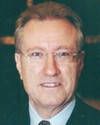Mr. Speaker, I used those statistics to indicate that we have advanced a fair bit. I also said at the point where I gave those statistics to the House that we still have a long way to go.
Obviously we want to put the most qualified people in all of our jobs. We want to make sure that those who have experienced barriers to those opportunities have those barriers removed in order to provide the kind of training and preparation that is necessary to give them every opportunity to be able to advance into those ranks.
The statistics indicate that we have come a fair direction but we still have a fair direction to go. I certainly would welcome the hon. member and any other member of the House giving suggestions and ideas about how we might better achieve that.
This has been a learning process for all of us over the years. Perhaps it has been rather slow in appearance to many people, perhaps these changes have been too slow to come about. Certainly there is an increasing acceleration, as the statistics indicate. On top of that, there is a greater awareness and desire to find new mechanisms, new methods and new means of training and preparation for providing, as I said in my remarks, that pool of people from all of the different employment equity groups-women, aboriginals, disabled and visible minorities-in order to have a public service that better reflects the composition of our population.

